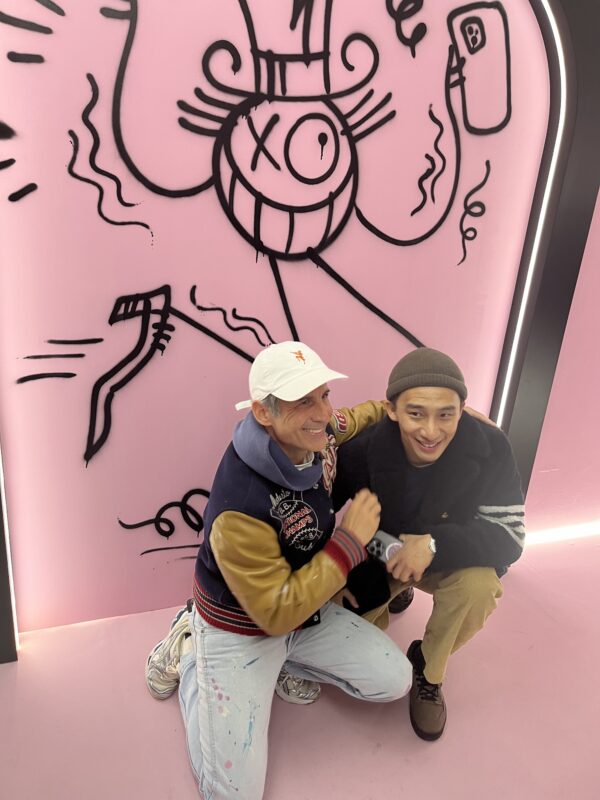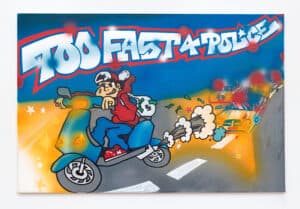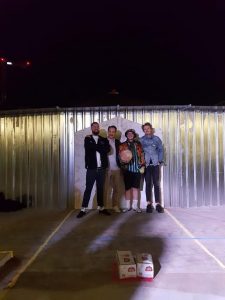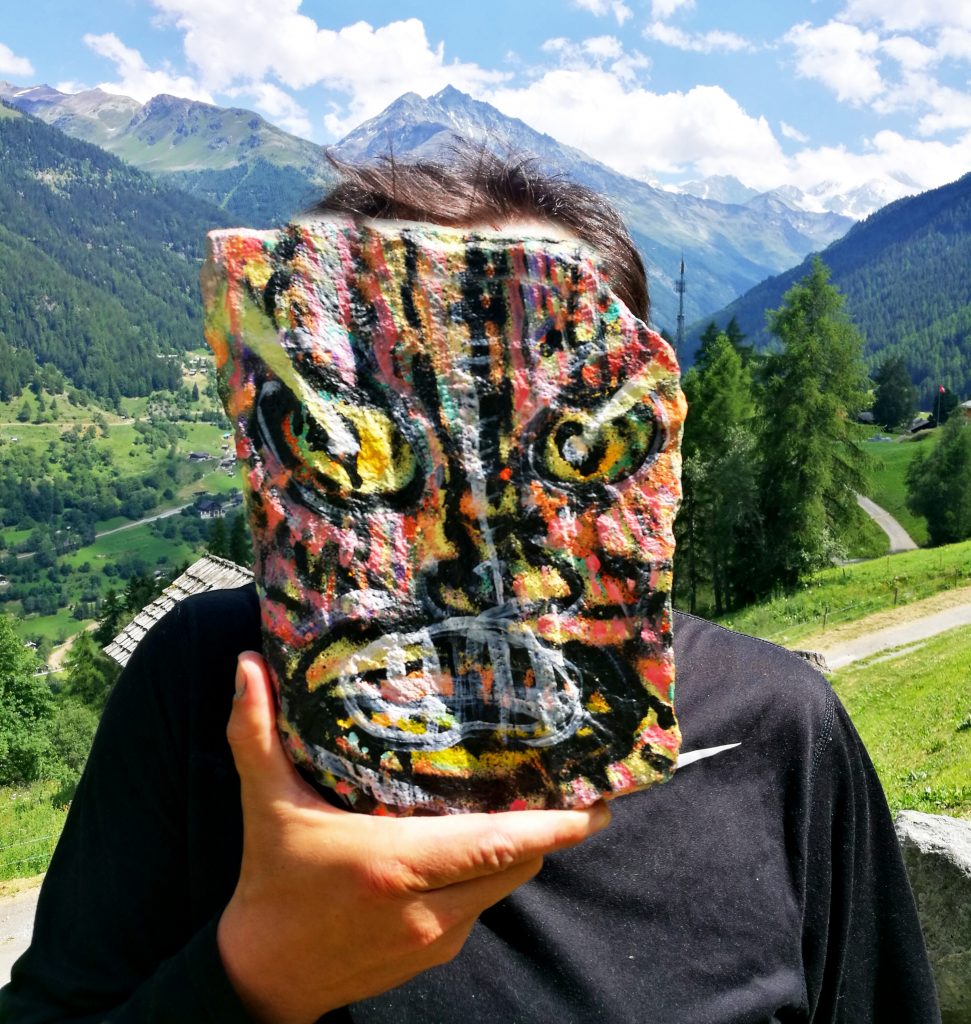
Every year, the multicultural city of Toulouse houses Latin America’s top graffiti artists, who descend on France for the annual Latino Graf festival. This year’s rendition celebrated the moon as its theme, inspired by the 50th anniversary of Apollo 11’s iconic moon landing.
The graffiti-focused event spotlights Latin American graffiti talent and aims to showcase work that’s different aesthetically from what’s typically seen on the streets in Europe. This year, four Latin American artists were invited to attend the festivities, hailing from Mexico, Columbia and Chile to create pieces for various French villages – mainly in Lille and its neighbouring communities. This year’s line-up includes Mexican illustrator Eva Bracamontes, Columbian artist Arturo Volátil, Chilean muralist Jotape and Columbian painter Sebastián Malegría. Olivia Atkins caught up with Malegría, who’s currently travelling around Europe – his first time on the continent – to discuss indigenous inspirations, international recognition and intel into the graffiti community.
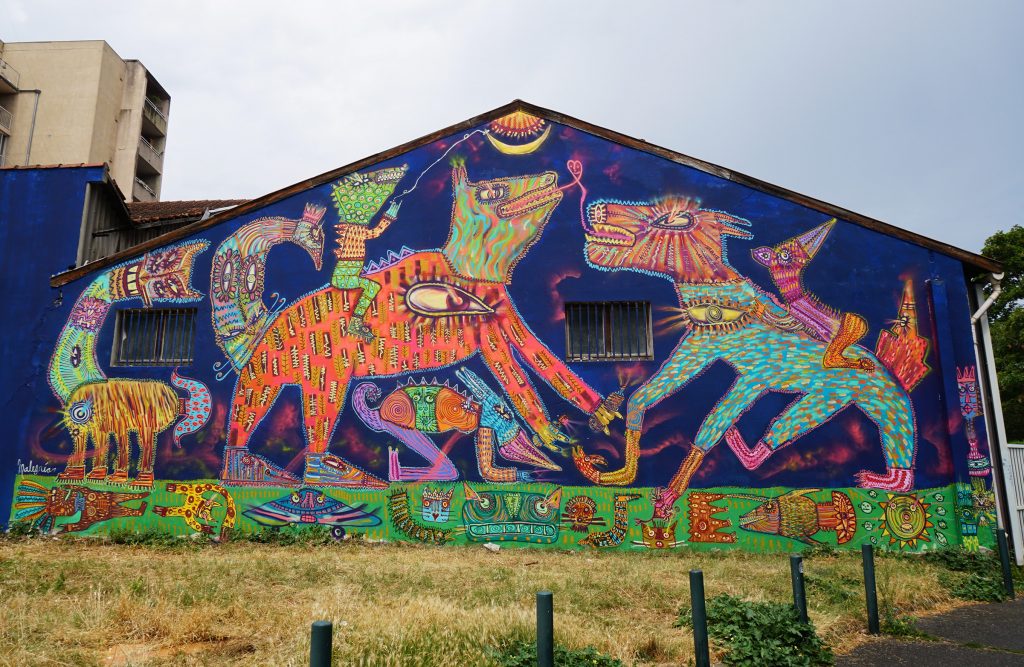
How did the opportunity to get involved with Latino Graf arise?
We had to submit a visual portfolio, sharing our past work and outlining a proposal to match the festival’s theme. Each year, the festival sets a theme for artists to meet. This year, the theme was the moon, in line with the 50th anniversary of Apollo 11’s moon landing.
I incorporate women and female forms in a lot of my artwork, relating them specifically to the elements as seen in indigenous and pre-Hispanic cultures. I’m from Bogota so a lot of my work is particularly rooted in contemporary Columbia. When working on my proposal, I did a lot of research into the relationship that women have with the moon and how they’re linked cyclically. Many of their behaviours revolve and sync with the moon’s own cycles. In Columbian indigenous spirituality, the moon is also synonymous with partying and losing control. So, I decided to incorporate these two factors and use them as inspiration for my proposal.
I then found out that I was one of four artists selected to attend the festival, out of 150 entries. When I talked to the festival organisers about this, they said they invited me because they felt my style was very unusual and filled with rich cultural references – which they liked because it set me apart.
Tell us about your festival piece.
In the mural, I painted a lunar eclipse, focusing on a nocturnal feast in a forest attended by imaginary animals who are celebrating the new moon.
I’m particularly interested in binaries and highlighting opposites in my work, so in this piece, you can see the sun and the moon, as well as a man and a woman. The two protagonists find each other in the night and share a tender kiss – an exchange of energy, in connection with the moon’s cycle.
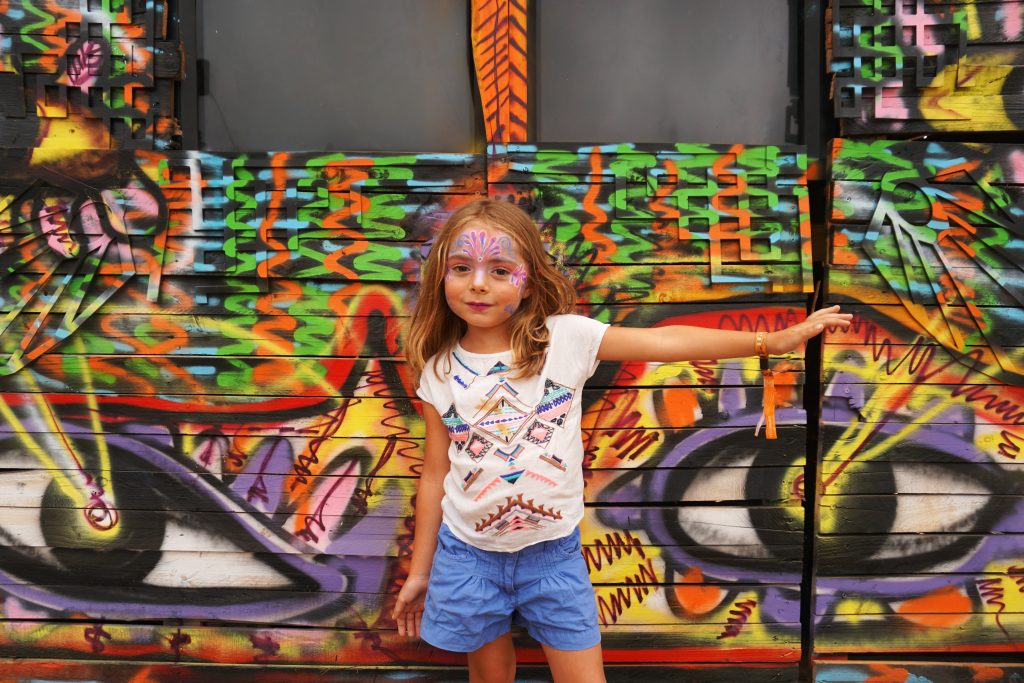
What inspires your work?
My experiences, conversations and even my dreams are a huge source of inspiration. I’m constantly exploring new references but I’m also trying to actively cultivate my imagination. The imagination is a powerful tool, so I want to understand it more deeply and push it further. I also like to mix real memories with elements of fantasy which is why a lot of imaginary animals feature quite heavily in my work. Everything that I’m seeing in my day-to-day life and on my travels ultimately feeds into my vision; from the people that I meet to the backdrops I’m seeing.
For this reason, I don’t like to work with preconceived concepts. I like to get a feel for the place that I’m working in and sketch out the design live on location. While I’m preparing for the build, I like to spend the days leading up to the job on site so that I can incorporate all my emotions and feelings from the place into the project. This is what I’ve been doing while working at Latino Graf.
Regarding materials, I try and use whatever I can. Sometimes I’ll use acrylic paint and go over it with aerosol spray. But I don’t like to limit myself with technical materials, so I try and incorporate whatever’s available.

Aside from the big lunar eclipse mural you did, how else were you involved with the festival?
We created unique art installations in the cities and villages between Lille and Toulouse. For example, we painted a kiosk in Madeleine, a village outside of Lille, which acts as a hub for the local Saturday market. My contribution was the paintwork on the columns, which supported the base of the structure and I worked on it with Eva Bracamontes. It was a really beautiful experience; lots of people came to watch as we painted. Lille is very multicultural so we had a lot of people from Africa and Latin America who turned up to see the festival in full swing. A lot of people also recognised my work because they’d travelled through Latin America and seen my murals. I’m really grateful that I got to meet some followers of my work and to chat to them in person about it.
What’s next?
The good thing about graffiti is that you accumulate friends from around the world. I’m always hosting people at my place in Bogota, so it’s been nice to come to Europe and see how they live for a change. I’m currently touring around Europe, combining some sightseeing with my graff-ing. I’m in the Swiss countryside at the moment, with some friends I met in Brazil and we’ve been painting together. I don’t want to leave this beautiful place but the next stop is Berlin.
It’s weird in Europe; it can be difficult to gain permissions to paint here as it’s a different set-up to Latin America where you just ask the building owner if you can paint a mural. Here, the process is a bit more formalised. I’d like to paint at more European festivals but for now, I just want to go with the flow. That’s the objective of any trip.

